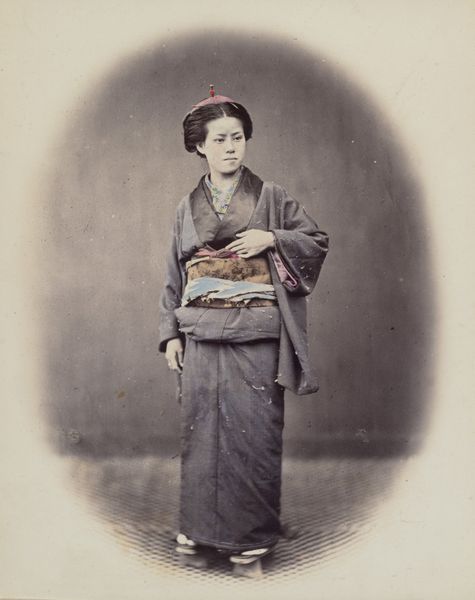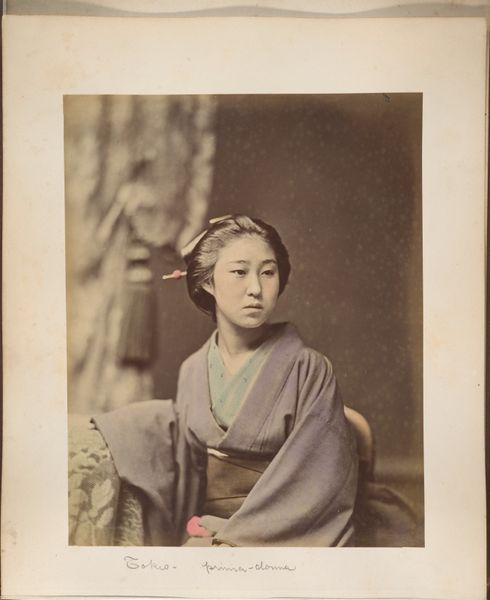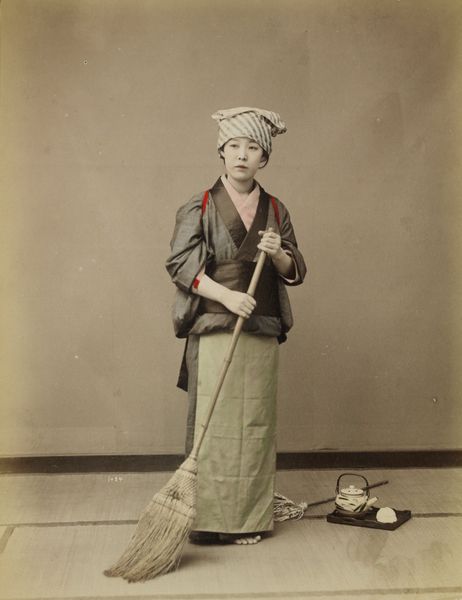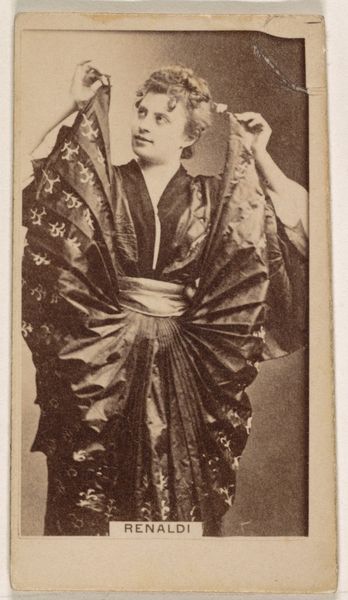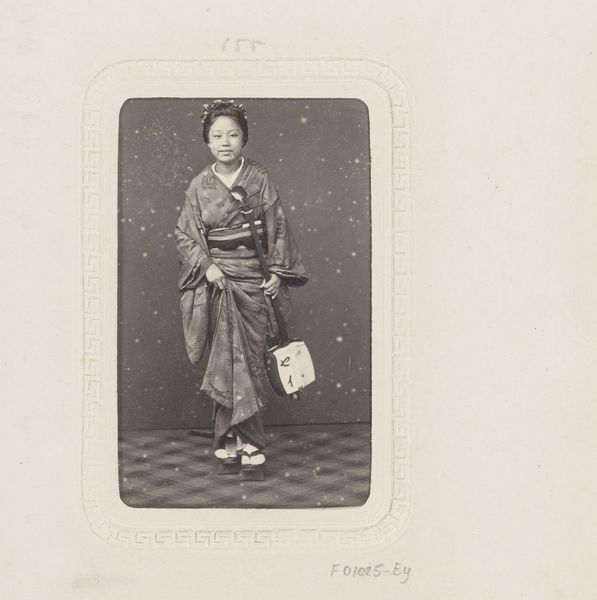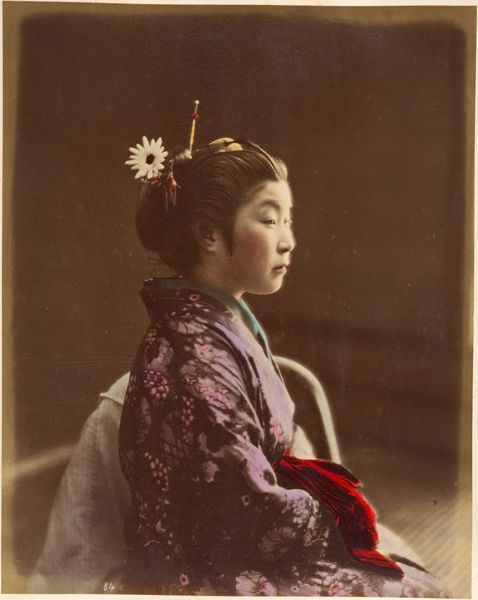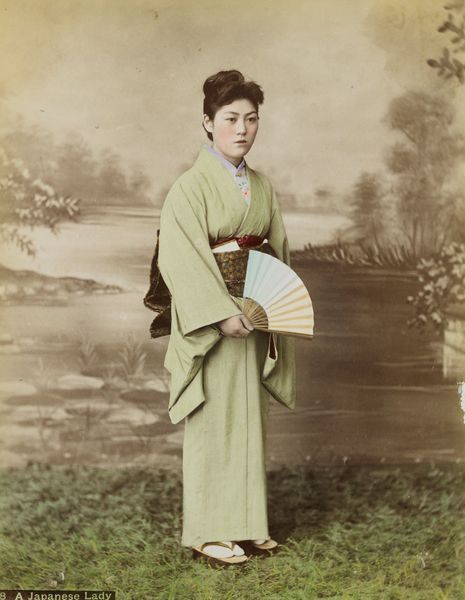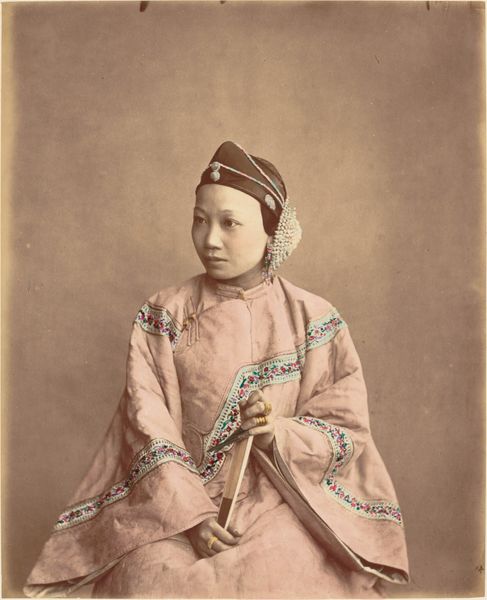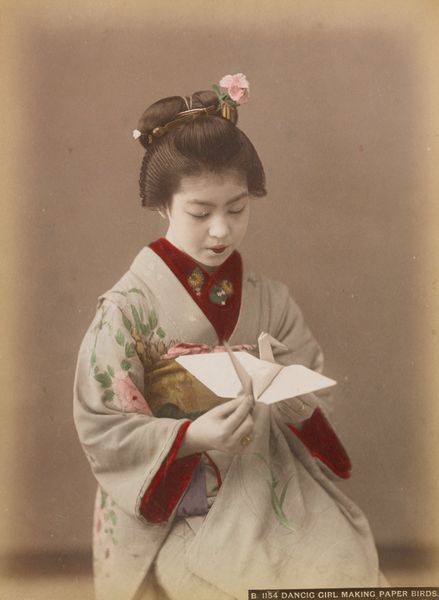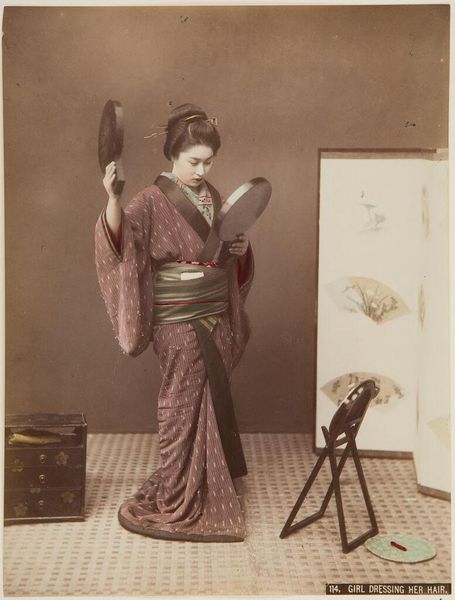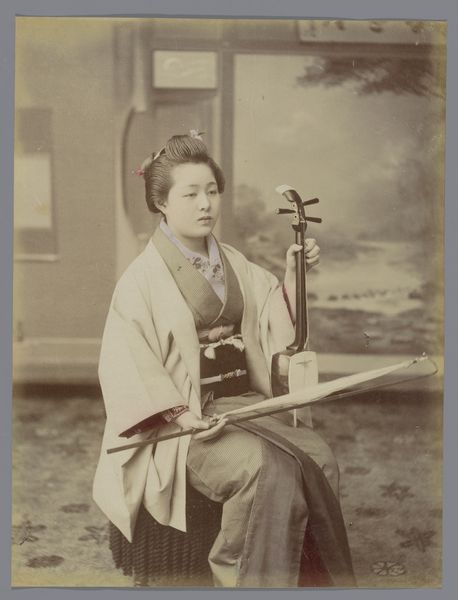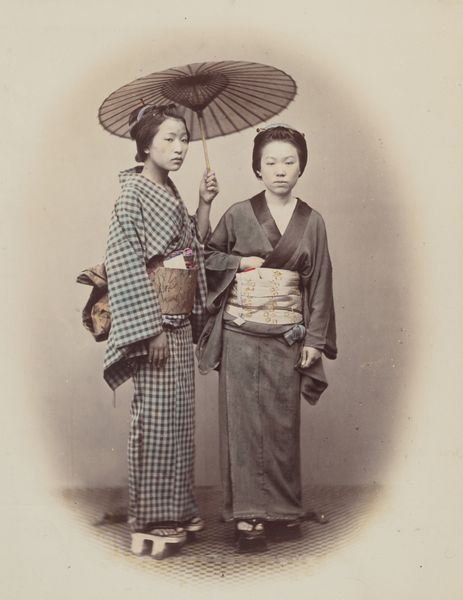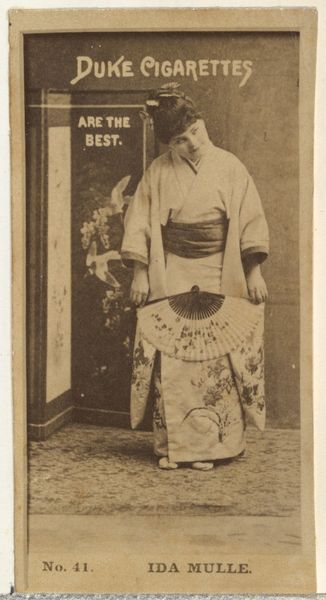
gelatin-silver-print, photography, gelatin-silver-print
#
portrait
#
gelatin-silver-print
#
asian-art
#
ukiyo-e
#
photography
#
gelatin-silver-print
Dimensions: 9 x 13 x 1 1/2in. (22.9 x 33 x 3.8cm)
Copyright: Public Domain
Curator: Just look at her. This photograph, taken sometime in the late 19th or early 20th century, captures a serene beauty, doesn’t it? The details of the hairstyle and kimono are incredibly elaborate, speaking to a different time and pace. Editor: Mmm, a subdued palette, almost sepia-toned. It immediately evokes a feeling of stillness, a moment frozen. It makes me consider the chemistry and material process behind it; these gelatin-silver prints have such an enduring quality. Curator: Indeed, it's a gelatin-silver print, part of a photography album, currently held at the Minneapolis Institute of Art. Knowing that makes me consider its creation – the darkroom practices, the selection of the subject. What do you make of the social context? Editor: Well, these portraits weren't always intended as art; they documented identity and status. The making of the kimono alone—the silk, the dyeing, the embroidery—signals not just aesthetics but a whole economy of labor. Were these meant for display, for private collections? Curator: Probably a mix, I think. Her hairstyle, so meticulously arranged, seems to proclaim a very specific identity, one meant to be admired. Editor: Exactly, and the time involved is telling. Photography, while newer, becomes a parallel act of labor – sitting for the portrait itself takes patience, reflecting this cultural value placed on composure and image. Consider how a contemporary version might reflect labor in a completely different manner… Curator: True. There's something melancholic too, in knowing how time and trends transform even the most iconic of styles into distant memories. Does it inspire you? I'm strangely transported. Editor: It inspires reflection, absolutely. Seeing the material record allows us to ask broader questions about representation, consumption, and the value of craftsmanship in a rapidly changing world. The past literally captured as commodity! Curator: Very much a poignant lens to see our cultural inheritance. Editor: And that’s how we uncover not only art but a world of production!
Comments
No comments
Be the first to comment and join the conversation on the ultimate creative platform.

